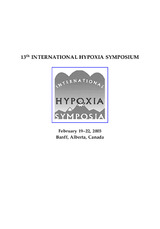Mostrar el registro sencillo del ítem
Andean compared with european women are protected from altitude-associated intrauterine growth restriction (IUGR)
| dc.contributor.author | Moore, Lorna G | |
| dc.contributor.author | Armaza, Fernando | |
| dc.contributor.author | Keyes, L | |
| dc.contributor.author | Borth, R | |
| dc.contributor.author | Niermeyer, Susan | |
| dc.contributor.author | Villena, Mercedes | |
| dc.contributor.author | MacCannell, Wendy | |
| dc.contributor.author | Vargas, Enrique | |
| dc.date.accessioned | 2019-07-29T18:30:43Z | |
| dc.date.available | 2019-07-29T18:30:43Z | |
| dc.date.issued | 2003 | |
| dc.identifier.uri | http://repositorio.umsa.bo/xmlui/handle/123456789/22047 | |
| dc.description.abstract | Abstract. Babies born at high altitude to long-term high-altitude residents weigh more than those of recent migrants from low altitude. Objective: We asked whether a gradient exists such that persons of Andean ancestry are protected relative to those of mestizo (“mixed”) and, in turn, European or other lowland ancestry. Methods: Medical records were examined from 3565 consecutive deliveries to women with 2+ prenatal visits at public or private hospitals in Santa Cruz (300 m, low), Cochabamba (2500 m, medium), and La Paz or Oruro (3600–3800 m, high). Population ancestry was judged by parental surnames. Persons of Bolivian nationality were assumed to have been born at their altitude of residence and non-Bolivians to have immigrated there as adults. IUGR was defined as birth weights, <10th percentile for gestational age and sex using sea-level criteria … | es_ES |
| dc.language.iso | en | es_ES |
| dc.publisher | s.n. | es_ES |
| dc.subject | CRECIMIENTO INTRAUTERINO | es_ES |
| dc.subject | ALTURA | es_ES |
| dc.subject | MUJERES ANDINAS | es_ES |
| dc.subject | MUJERES EUROPEAS | es_ES |
| dc.title | Andean compared with european women are protected from altitude-associated intrauterine growth restriction (IUGR) | es_ES |
| dc.type | Article | es_ES |

